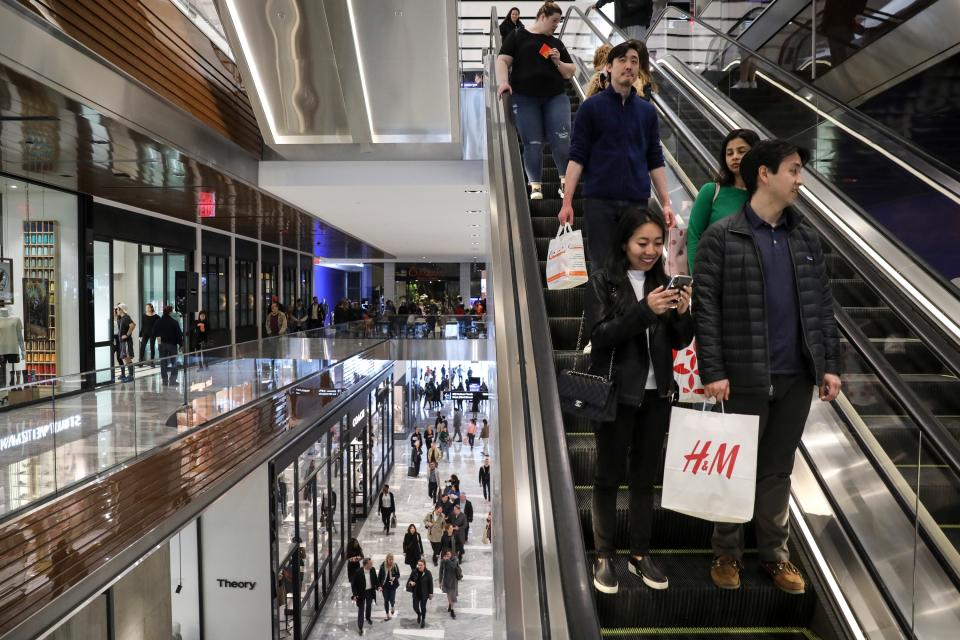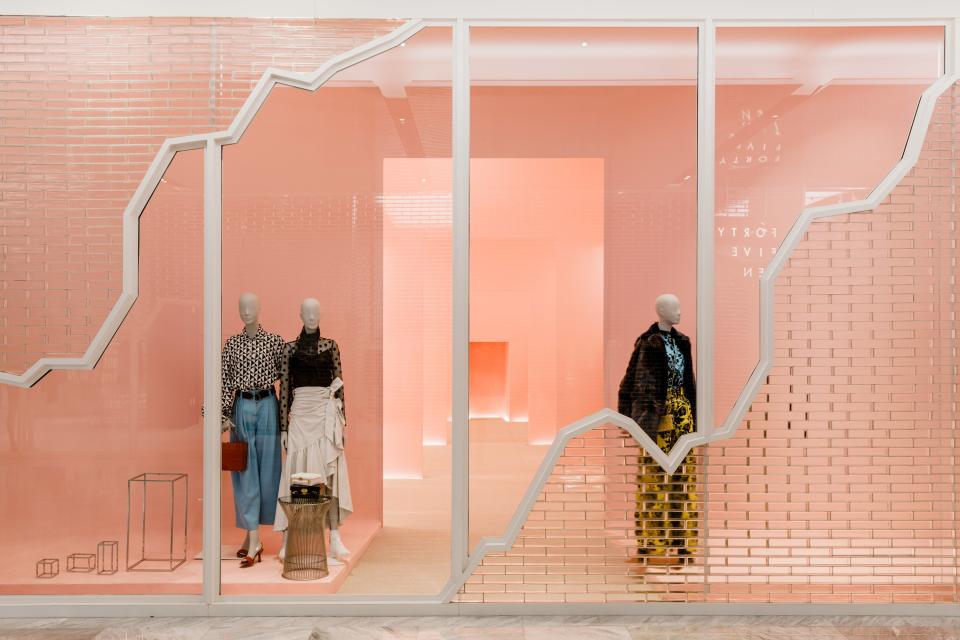A Former Urban Mall Rat Shops the New Hudson Yards
My middle school in downtown Chicago was situated across the street from a seedy McDonald’s and down the block from a halfway house. A 10-minute walk away we had Michigan Avenue, where we’d hang out at a park near the lake or at what would eventually become the epicenter of our young lives: Water Tower Place. Water Tower, with all of its luxe fixtures and modern (at the time) trimmings, was my mall. It was close to where I lived and it had everything, including a movie theater, Limited Too, Abercrombie & Fitch, Claire’s, and Sam Goody. There was a McDonald’s (not seedy), a California Pizza Kitchen, and a small but ample food court owned by one of the city’s most famous restaurant groups. Sharper Image was also an exciting spot in those days.
My friends and I hung out at Water Tower after school and on weekends. The security guards knew us by name and we got kicked out for playing football in the halls and hide-and-seek in the department stores. I had my first date there and it’s where my mom bought me my first bra. The place is filled with memories for me, all of which came flooding back when I visited Hudson Yards this weekend.
The doors opened on Friday to the shops and restaurants of the $20 billion development in what many consider Manhattan’s no-man’s-land. Scores of people came to the far west side of the island to check out the million-square-foot marbled palace of modern commerce. I joined in and wandered through the surprisingly narrow halls with them, all of us walking en masse past the giant Zara, H&M, and Uniqlo, which, in a sort of antiquated twist, had employees standing outside in head-to-toe logos handing out coupons. Passing the tourists waiting in line at Fuku and Shake Shack, I made it up to the fifth floor via escalator to check out each separate storefront of the Dallas transplant Forty Five Ten. Housed in one space is their vintage section and in another, luxury labels like Proenza Schouler and Rodarte. Across the hall is their men’s and shoe selections, and in the adjacent shop brands like Maryam Nassir Zadeh and Simon Miller, as well as a collection of ceramics and other cool Brooklyn townhouse-appropriate objets. It was the first place in Hudson Yards where I felt like I could exit the stream of people in the halls and have a moment to shop in relative solitude.

775291123
Photo: Getty ImagesWhat is mall culture anyway if you can’t sit down? Centralized gathering spaces are the anchors of any great retail center, or at least that used to be the case. Malls, especially urban malls like mine back in the day, were of course about marketing and profit, but to me they seemed to be about community. In the shopping center of Hudson Yards, there aren’t any benches or chairs or wide open areas—a marked difference from the expansive main thoroughfare of the Oculus or the palm tree–decorated atrium of Brookfield Place (working in One World Trade Center, I’ve spent my fair share of time in these luxury malls). Even the shopping experiences on the streets of New York City feel slightly more community-oriented, with places on the sidewalk to lean, to sit, to see the world go by.
At Hudson Yards, you walk in, you buy, you move on, maybe stopping and eating a proper meal at one of the fancy restaurants or the impressive José Andrés food hall. As I wandered the halls this weekend, I noticed families eating their Van Leeuwen Artisan Ice Cream together on the floor. Some sat at real tables outside of Citarella, but there were only 10 or so available. You couldn’t people-watch, unless you snagged a spot between selfie sticks on the platform that hovers above the main entrance.
Granted, it was opening weekend and there is still a lot of building to be done, both inside and outside of the retail areas. Hudson Yards is very unfinished, and in time it may serve as a gathering place for families, couples, and local kids looking to hang out with one another IRL. Even as the idea of retail, and how we consume and approach it, shifts, maybe there’s hope for a return to the glory days of mall culture, or something like them. Generally speaking, these spaces encourage human-to-human interaction and that’s something in this technology-dependent era that we all could use more of.


